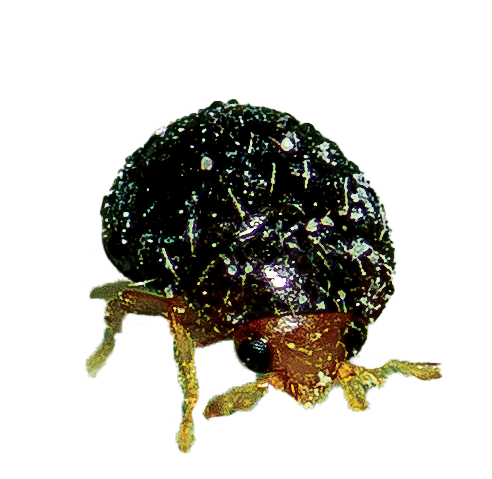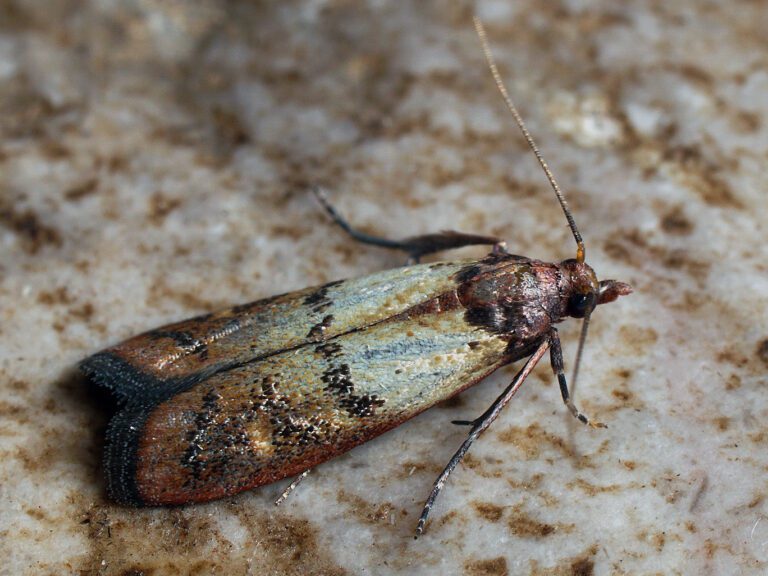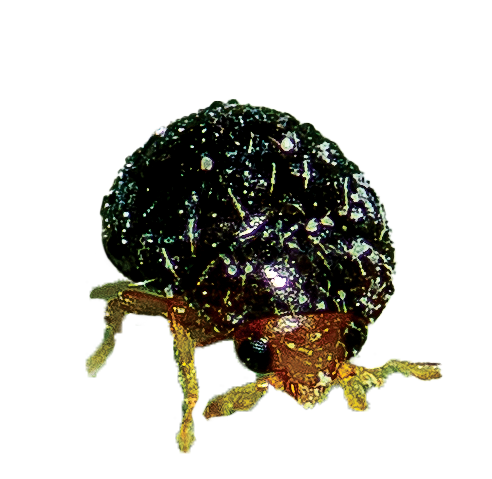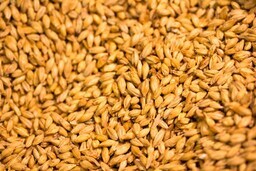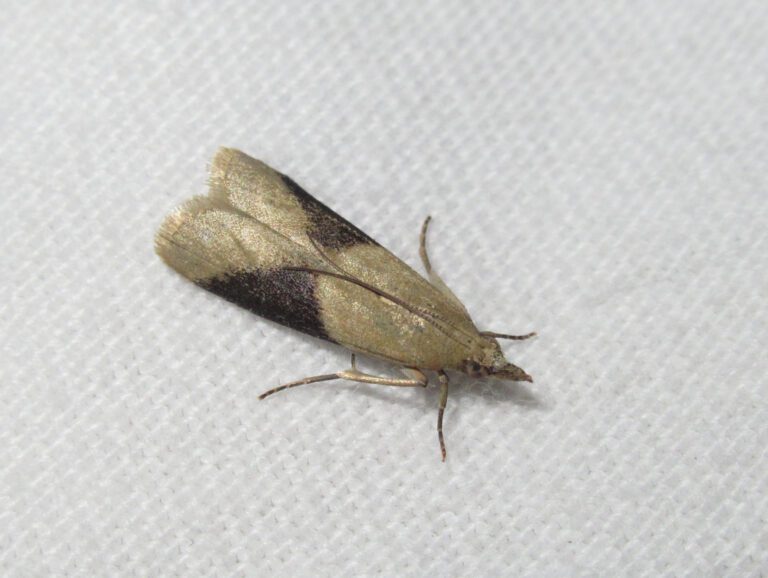Getting Rid of Indianmeal Moth Larvae: Effective Treatments and Prevention
Introduction
What are Indianmeal Moth Larvae?
Indianmeal moth larvae are the immature stage of the Indianmeal moth, a common pantry pest. These larvae are small, cream-colored worms with brown heads and are typically found inside stored food products. They have a voracious appetite and can infest a wide range of dry goods, including grains, cereals, nuts, and dried fruits. Indianmeal moth larvae are known for their ability to cause significant damage to stored food items, contaminating them with their excrement and silk webbing. It is important to identify and eliminate these larvae as soon as possible to prevent further infestation and protect your food supplies.
Why are Indianmeal Moth Larvae a Problem?
Indianmeal moth larvae are a significant problem for many households and businesses. These pests infest stored food products, such as grains, cereals, and dried fruits, causing contamination and spoilage. The larvae are small and cream-colored, making them difficult to spot until they have already caused damage. They can quickly reproduce and spread throughout the pantry, making it challenging to eliminate them once an infestation occurs. Additionally, Indianmeal moth larvae can trigger allergic reactions in some individuals, leading to respiratory problems and skin irritation. Therefore, it is crucial to address the issue promptly and implement effective treatments and prevention methods to control and eliminate Indianmeal moth larvae infestations.
The Importance of Effective Treatments and Prevention
The Importance of Effective Treatments and Prevention
Indianmeal moths are a common household pest that can cause significant damage to stored food products. These pests are known for their ability to infest pantries and contaminate food with their larvae. Therefore, it is crucial to implement effective treatments and prevention methods to eliminate Indianmeal moth larvae and prevent future infestations. By taking proactive measures, such as regularly inspecting and cleaning pantry areas, using airtight containers for storing food, and employing natural or chemical treatments, homeowners can ensure the safety and quality of their stored food. Additionally, prompt action in addressing infestations and implementing preventive measures can help minimize the financial losses and health risks associated with Indianmeal moth infestations. Overall, understanding the importance of effective treatments and prevention is key to maintaining a pest-free and healthy home environment.
Identifying Indianmeal Moth Larvae
Physical Characteristics
Indianmeal moth larvae, also known as pantry moth larvae, are small caterpillar-like insects that infest stored food products. They have a whitish or yellowish color and measure about 1/2 inch in length. These larvae have a distinct head capsule and three pairs of true legs, followed by several pairs of prolegs. They are often found crawling or wriggling inside food containers or on pantry shelves. The physical characteristics of Indianmeal moth larvae make them easily recognizable and distinguishable from other pests.
Behavior and Habits
Indianmeal moth larvae are known for their specific behavior and habits. These pests are attracted to stored food products such as grains, cereals, and dried fruits. They have a strong ability to infest and reproduce rapidly, causing significant damage to food supplies. Indianmeal moth larvae are also known for their ability to spin silk webs, which they use to protect themselves and create a safe environment for feeding and breeding. Understanding their behavior and habits is crucial for effective treatment and prevention strategies.
Signs of Infestation
Signs of infestation by Indianmeal moth larvae can be easily identified. One of the most common signs is the presence of small, whitish larvae crawling around in your pantry or kitchen. These larvae are about 1/2 inch long and have a worm-like appearance. Another sign of infestation is the presence of webbing or silk-like threads in your stored food items. Indianmeal moth larvae spin silk webs to protect themselves and their feeding sites. Additionally, you may notice small holes or tunnels in your food packaging, as the larvae chew through the material to access the food. If you observe any of these signs, it is important to take immediate action to eliminate the infestation and prevent further damage to your stored food.
Common Treatments for Indianmeal Moth Larvae
Natural Remedies
Natural remedies are a popular choice for getting rid of Indianmeal moth larvae due to their effectiveness and safety. One such remedy is the use of pheromone traps, which attract and trap adult moths, preventing them from reproducing. Another natural approach is the use of essential oils, such as lavender or peppermint, which can repel and deter moths. Additionally, maintaining a clean and well-sealed pantry is essential to prevent infestations. Regularly inspecting and discarding infested food items, as well as storing dry goods in airtight containers, can help keep Indianmeal moths at bay. By incorporating these natural remedies into your pest control routine, you can effectively eliminate Indianmeal moth larvae and prevent future infestations.
Chemical Treatments
Chemical treatments are one of the most effective ways to eliminate Indianmeal moth larvae infestations. There are several options available in the market that can target and kill these pests. One popular choice is the use of insecticides specifically designed for Indianmeal moths. These insecticides contain active ingredients that can quickly eradicate the larvae and prevent further infestations. It is important to carefully follow the instructions provided by the manufacturer when using chemical treatments to ensure safe and effective application. Additionally, it is recommended to use chemical treatments in conjunction with other preventive measures, such as proper food storage and regular cleaning, to achieve long-term control of Indianmeal moth larvae.
Professional Pest Control
When it comes to dealing with Indianmeal moth larvae infestations, professional pest control services can be highly effective. Pest control professionals have the knowledge, experience, and tools to identify the source of the infestation and implement targeted treatments to eliminate the larvae and prevent future outbreaks. They can also provide valuable advice on preventive measures, such as proper food storage and sanitation practices, to minimize the risk of reinfestation. Hiring a professional pest control service can save you time and effort, ensuring a thorough and long-lasting solution to your Indianmeal moth larvae problem.
Preventing Indianmeal Moth Larvae Infestations
Proper Food Storage
Proper food storage is essential in preventing and getting rid of Indianmeal moth larvae infestations. These pests are attracted to stored food products, especially grains, cereals, and dried fruits. To effectively control their population, it is important to store all food items in airtight containers made of glass, metal, or heavy-duty plastic. This will prevent the moths from accessing the food and laying eggs. Additionally, regular cleaning and inspection of the storage areas is crucial to identify any signs of infestation early on. Any infested items should be discarded immediately to prevent further spread. By implementing proper food storage practices, individuals can greatly reduce the risk of Indianmeal moth larvae infestations and protect their food from contamination.
Regular Cleaning and Inspection
Regular cleaning and inspection are essential for effectively getting rid of Indianmeal moth larvae and preventing their infestation. By regularly cleaning and inspecting your pantry, kitchen, and other areas where food is stored, you can identify any signs of moth larvae or their eggs and take immediate action. This includes vacuuming and wiping down shelves, checking for any spilled or expired food items, and ensuring that all containers are tightly sealed. Additionally, maintaining proper hygiene practices such as keeping food areas clean and dry can help deter these pests from infesting your home. By incorporating regular cleaning and inspection into your routine, you can significantly reduce the risk of Indianmeal moth larvae infestation and protect your food from contamination.
Sealing Entry Points
Sealing entry points is an essential step in getting rid of Indianmeal moth larvae and preventing future infestations. These pests can enter your home through even the tiniest cracks and openings, so it’s important to thoroughly inspect and seal all potential entry points. This includes gaps around windows and doors, cracks in walls or flooring, and openings around utility pipes and vents. By effectively sealing these entry points, you can create a barrier that prevents Indianmeal moths from entering your home and laying eggs. Additionally, sealing entry points can also help to improve energy efficiency and reduce drafts, providing added benefits to your home. To seal entry points, use caulk or weatherstripping to fill any gaps or cracks, and consider installing door sweeps or window screens to further prevent moth entry. Regularly inspect and maintain the seals to ensure they remain intact and effective in keeping Indianmeal moths out.
Dealing with Indianmeal Moth Larvae in Specific Areas
Kitchen and Pantry
The kitchen and pantry are common areas where Indianmeal moth larvae can infest and cause damage. These pests are attracted to stored food items such as grains, cereals, dried fruits, and pet food. To effectively get rid of Indianmeal moth larvae in the kitchen and pantry, it is important to maintain cleanliness and hygiene. Regularly clean and vacuum the shelves, cabinets, and pantry to remove any food particles or crumbs that may attract the larvae. Additionally, store food items in airtight containers to prevent infestation. Inspect and discard any infested food items immediately to prevent the larvae from spreading. By implementing these preventive measures and maintaining a clean environment, you can effectively eliminate Indianmeal moth larvae from your kitchen and pantry.
Closets and Storage Areas
When it comes to dealing with Indianmeal moth larvae in closets and storage areas, there are several effective treatments and prevention methods. One of the first steps is to thoroughly clean and vacuum the area, removing any potential food sources for the larvae. It is also important to inspect and discard any infested items such as stored food, pet food, or birdseed. To prevent future infestations, consider using airtight containers for storing food and regularly inspecting and cleaning the storage areas. Additionally, using pheromone traps can help monitor and control the moth population. By implementing these measures, you can effectively get rid of Indianmeal moth larvae and prevent their reinfestation in closets and storage areas.
Pet Food Storage
Proper pet food storage is essential in preventing Indianmeal moth infestations. These pests are attracted to the grains and cereals commonly found in pet food. To keep Indianmeal moth larvae at bay, it is important to store pet food in airtight containers. This prevents the moths from accessing the food and laying their eggs. Additionally, regularly inspecting the pet food for any signs of infestation, such as webbing or larvae, is crucial. If an infestation is detected, it is recommended to dispose of the affected food and thoroughly clean the storage area to eliminate any remaining larvae or eggs. By practicing proper pet food storage, you can effectively prevent Indianmeal moth infestations and ensure the health and safety of your pets.
Conclusion
Summary of Effective Treatments and Prevention
The article provides a comprehensive summary of effective treatments and prevention methods for getting rid of Indianmeal moth larvae. It covers various approaches, including natural remedies and chemical treatments, to help readers choose the most suitable option for their situation. The article also emphasizes the importance of proper hygiene and sanitation practices in preventing infestations. By following the recommended tips and strategies, readers can effectively eliminate Indianmeal moth larvae and prevent future outbreaks in their homes or businesses.
Importance of Early Detection
Early detection of Indianmeal moth larvae infestations is crucial for effective treatment and prevention. These pests can quickly multiply and spread, causing extensive damage to stored food products. By detecting the infestation in its early stages, immediate action can be taken to eliminate the larvae and prevent further damage. Early detection also allows for the implementation of preventive measures, such as proper storage techniques and regular inspections, to minimize the risk of future infestations. Therefore, understanding the importance of early detection is essential in maintaining the integrity and quality of stored food items.
Maintaining a Moth-Free Environment
Maintaining a moth-free environment is essential in preventing the infestation of Indianmeal moth larvae. To achieve this, it is important to regularly clean and vacuum areas where food is stored, as well as properly seal any cracks or openings that could serve as entry points for the moths. Additionally, storing food in airtight containers and regularly inspecting stored items for signs of infestation can help to identify and eliminate any potential breeding grounds for the larvae. By following these preventive measures, individuals can effectively reduce the risk of Indianmeal moth infestations and ensure a moth-free environment.

